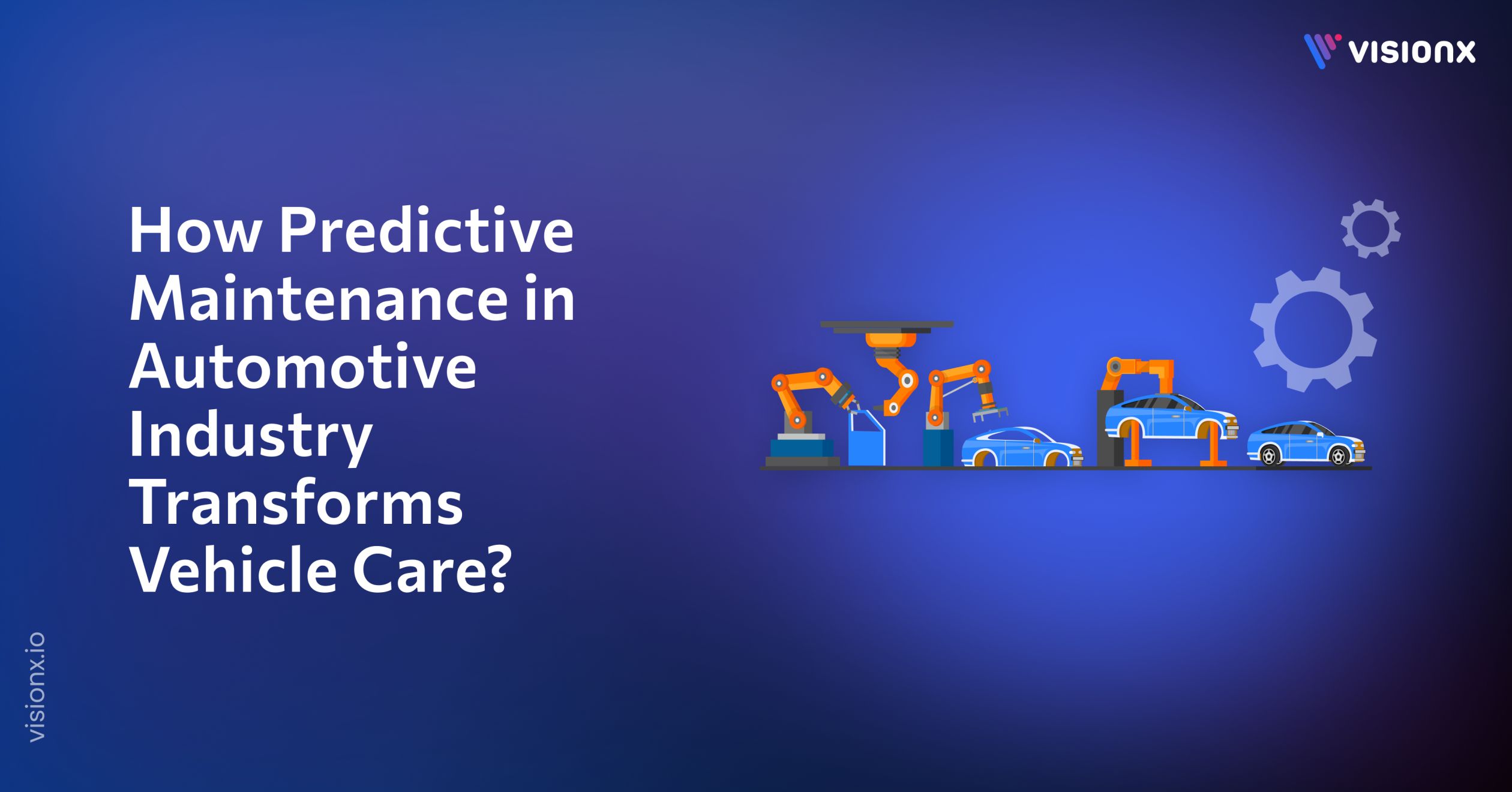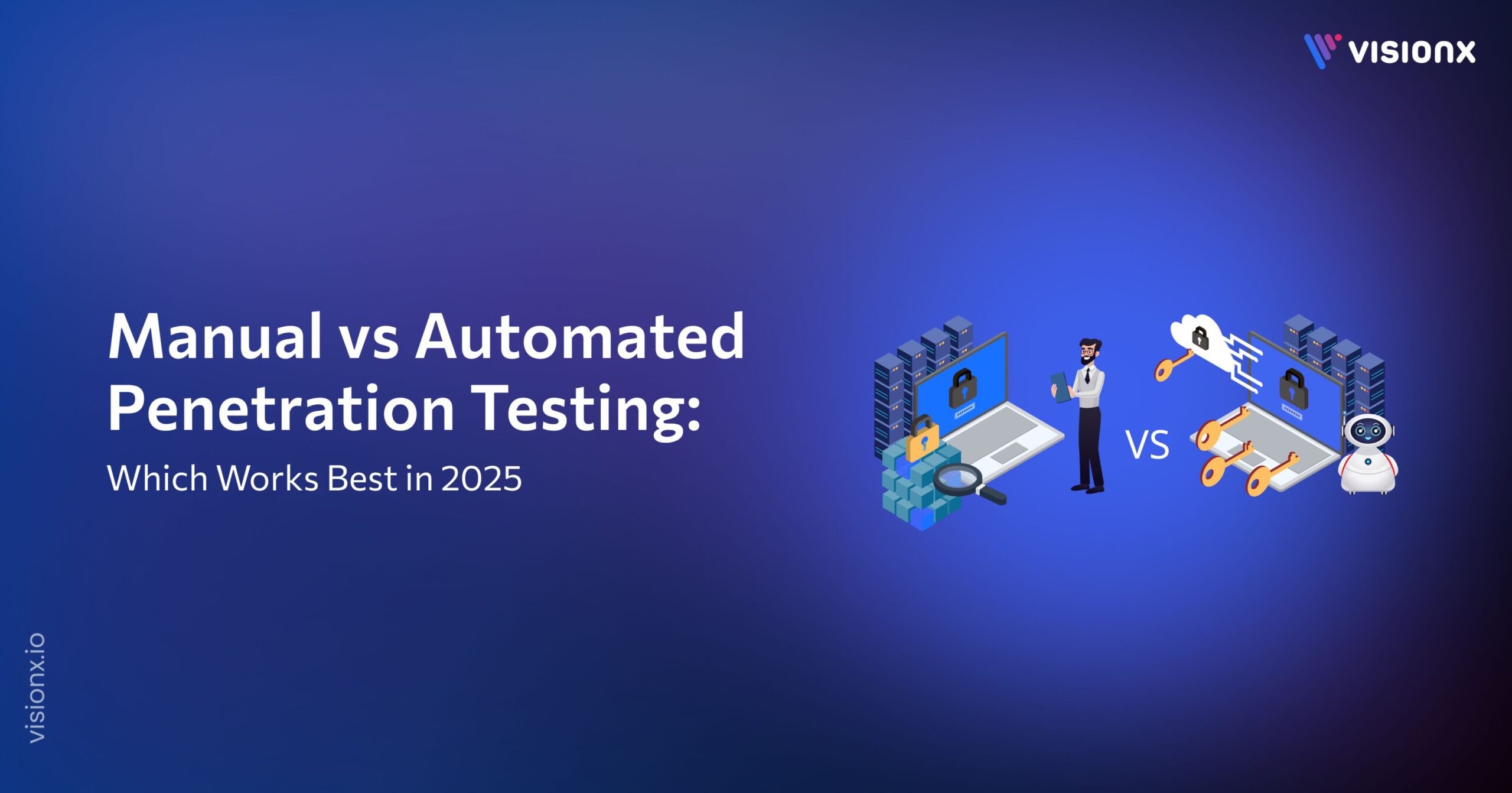Car maintenance used to be a choice between two options. You followed a strict maintenance schedule, or you waited for something to break. Both methods had flaws. Scheduled maintenance could mean service you did not need. While reactive repairs often meant a bigger bill and time without your car.
Predictive maintenance in automotive industry introduces a smarter way to manage vehicle health. Often called automotive predictive maintenance, it uses real-time data from vehicle sensors to monitor the health of parts. With the support of machine learning algorithms, the system can spot a potential issue long before it causes a failure. This approach moves us from a fixed calendar to actual vehicle condition.
In the US alone, there are about 69 million vehicle breakdowns each year, costing around $44 billion in repair and related losses.
This blog will help you understand how predictive maintenance offers better control over vehicle maintenance, supports fleet operations, and helps in preventing costly breakdowns. It will also help you identify the specific ways it can change how you care for your vehicle.
What Is Predictive Maintenance in Automotive Industry?
Predictive maintenance (PdM) in automotive industry is a data-driven method that tracks the real-time condition of vehicles using sensors, telematics, and advanced analytics. It forecasts when parts are likely to break or need maintenance rather than adhering to set service schedules.
By taking care of problems before they become serious, predictive analytics in automotive industry helps minimize unplanned failures, lower repair costs, and increase vehicle longevity. In fact, studies show that predictive maintenance can reduce overall maintenance costs by up to 40%.
The core parts of this predictive maintenance automotive solution are:
- Data Collection: Sensors throughout the vehicle gather real-time information.
- Data Analysis: Software finds small changes in the data that signal a future fault.
- Actionable Alerts: The system provides a specific warning, so a repair can be planned.
The goal is to identify a component that shows early signs of wear. You get an alert to replace a part when it needs it, not before and not after. This changes the focus from scheduled repairs to predictive maintenance for vehicles, a more precise form of predictive automotive maintenance.
Why Is Predictive Maintenance Important for the Automotive Industry?
Predictive maintenance in automotive industry is an important improvement in vehicle care. Its significance stems from addressing core industry challenges while creating new value across the ecosystem. It matters because it solves real problems for everyone involved.
These are a few reasons why automotive predictive maintenance is important.
- Turns maintenance into a proactive maintenance strategy that builds customer trust through demonstrated results.
- Provides essential monitoring for modern vehicles with thousands of electronic components using predictive maintenance automotive solutions.
- Reduces unplanned breakdowns by approximately 50% according to Forbes data.
- Transforms commercial fleets from potential liabilities into managed assets.
- Directly impacts delivery schedules and profitability in fleet operations by reducing downtime.
- Prevents small issues from becoming major failures through continuous oversight.
- Enables predictable performance and better operational planning.
Core Transformations in Vehicle Care
Predictive Maintenance in Automotive Industry changes the entire model of vehicle care. These are the core shifts.
From Reactive to Proactive Repairs
The old model was simple. You drove your car until you heard a noise or saw a warning light. And then you reacted. This meant repairs were urgent, often more expensive, and left you without a vehicle.
Automatic predictive maintenance alerts you to a weak battery or worn brake pad weeks before it fails. You move from a position of reaction to one of control. Repairs become planned events, not emergencies.
From Generic Schedules to Personalized Care
A service manual gives the same advice to every driver. It says “change oil every 5,000 miles.” But your 5,000 miles of city driving are different from another person’s highway miles. Generic schedules often lead to wasted money or, worse, overdue maintenance.
Predictive maintenance for vehicles personalizes care. The system analyzes how you drive and the actual condition of your oil or parts. It recommends service based on real use. Your vehicle gets the exact care it needs, exactly when it needs it.
From Costly Fixes to Cost Savings
A small problem often becomes a big one if it is ignored. A minor oil leak can ruin an engine. A worn belt can break and cause other damage. Reactive fixes tend to be costly fixes.
Catching an issue early almost always costs less. Replacing a single sensor is cheaper than replacing the entire system it controls. This approach also reduces downtime for fleet vehicles, which directly saves money.
From Risk to Reliability
Before a long trip, you might worry about your car. That is a form of risk. For a business with a fleet of delivery vans, that risk is a daily cost. Unexpected breakdowns harm reliability.
Predictive automotive maintenance replaces that worry with knowledge. You know the condition of key parts. This builds confidence and reliability for individual drivers and large fleets alike. The vehicle becomes more of a trusted tool and less of a potential problem.
How Predictive Maintenance in Automotive Industry Work?
Predictive maintenance in automotive industry works through a clear, data-driven process. Here’s how it works in practice.
1. Data Acquisition from Vehicle Systems
A predictive maintenance car operates as a network of intelligent sensors. These components do not merely function; they constantly report on their own condition. Sensors embedded within the engine block monitor thermal patterns and vibrational frequencies.
Actuators in the braking system track pressure differentials and pad thickness. The battery management system records charge cycles and internal resistance. This is not intermittent monitoring. It is a continuous, real-time assessment of the vehicle’s vital signs, creating a comprehensive data profile of its health.
2. Analytical Processing of Sensor Data
The raw data from these sensors is processed by advanced algorithms. These algorithms first establish a unique baseline for your vehicle’s normal operation. They then perform a continuous comparison of incoming data against this baseline.
The objective is to identify anomalies, a specific frequency of vibration in the drivetrain that suggests a bearing has begun to wear, or a gradual increase in engine temperature that indicates a future cooling system inefficiency. This analytical layer enables predictive maintenance in automotive industry by detecting early molecular signs of wear long before any visible or audible symptoms appear.
3. Generation of Actionable Intelligence
The system translates these analytical findings into a precise, actionable insight for you. You do not receive a generic warning light. Instead, you get a specific notification. It will state that the rear left brake pad has 15% of its life remaining, or that the battery has a high probability of failure within the next 30 days.
This intelligence is clear, direct, and devoid of ambiguity. It tells you exactly what is happening, which component is affected, and the projected timeframe for action.
4. Implementation of Planned Maintenance
This intelligence allows you to transition from a reactive posture to a proactive one. You contact your service provider with a definitive diagnosis. The shop can order the specific required part in advance.
You schedule the service at a time that suits your life, without urgency. This planned intervention eliminates the emergency tow, the unexpected repair bill, and the significant inconvenience of sudden vehicle downtime. Maintenance becomes a managed event and not a crisis.
5. Achievement of Long-Term Vehicle Reliability
The entire process generates a fundamental advancement in vehicle lifespan and ownership expenses. A small problem in a part needs to be fixed right away to stop it from creating major system breakdowns.
The active maintenance of the vehicle preserves its working condition and safety features and protects its resale value. Through this cycle, a predictive maintenance car transitions from uncertainty to reliability, operating as a dependable asset that supports both individual drivers and fleets.
Benefits of Predictive Maintenance in Automotive Industry
Predictive maintenance offers five clear advantages that change how you manage vehicles.
Increased Vehicle Uptime
Your vehicles stay in operation for a longer period of time. Unplanned breakdowns become rare with a predictive maintenance car. For a business, this means your fleet remains productive. For an individual, it means your primary transportation is always available when you need it.
Enhanced Reliability and Safety
Predictive maintenance in automotive industry tracks safety-critical components, which include brakes and steering systems. The system detects threats before they develop into dangerous situations. The proactive method delivers better protection to drivers and all road users.
Extended Component Life
Parts last longer when maintained properly. Predictive care addresses wear early, before it causes collateral damage. This approach maximizes the service life of expensive components like engines and transmissions.
Reduced Maintenance Costs
You avoid major repairs by catching issues early. Fixing a small sensor problem is far cheaper than replacing an entire system it controls. This proactive strategy leads to significant long-term savings.
Improved Customer Satisfaction
Reliability builds trust. For businesses, consistent vehicle availability means on-time deliveries and better service. For repair shops, the accuracy of predictive maintenance for automotive vehicles creates confident customers who value professional expertise.
Applications of Predictive Automotive Maintenance in Modern Vehicles
Predictive maintenance is active in many vehicles on the road today. These applications show how the technology works in practice.
Engine and Transmission Monitoring
Sensors track the health of your engine and transmission. They analyze oil quality and watch for unusual vibrations. This monitoring determines when your oil actually needs a change, based on its condition rather than a set mileage. The same approach detects early signs of transmission wear, allowing for repairs before a major failure occurs. Predictive maintenance in vehicles makes this process accurate and proactive.
Brake System Analysis
Your vehicle keeps track of brake pad thickness and brake fluid pressure at all times. The system uses continuous analysis to forecast brake pad replacement times through your actual driving behavior. The monitoring system tracks brake system problems, which include caliper sticking and brake fluid deterioration, because these issues affect vehicle safety.
Battery and Electrical System Management
Continuous monitoring tracks your battery’s health and charging patterns. This process warns you if your battery is weakening, giving you time to replace it before it fails. The same monitoring covers the alternator and voltage levels throughout the electrical system to prevent unexpected electrical issues. Here, automatic predictive maintenance reduces the risk of sudden power failures.
Tire and Wheel Bearing Health
Sensors monitor tire pressure and temperature in real time. This tracking can detect a slow leak or uneven wear patterns that indicate an alignment problem. The monitoring also watches wheel bearings for early signs of wear, preventing potential safety hazards.
Chassis and Suspension Components
The monitoring covers wear in suspension components like shocks and struts. It detects changes in how your vehicle handles bumps and corners. This allows for repairs before the wear affects your vehicle’s handling and safety. It’s how vehicle predictive maintenance machine learning supports long-term reliability.
Future of Predictive Maintenance in Automotive Industry
The future of predictive maintenance will be defined by specific technological advances. These technologies will make the systems more accurate and autonomous.
Digital Twin Technology
Your vehicle will have a virtual replica that updates in real time. This digital twin will simulate stress and wear on components based on your actual driving data. Engineers can run tests on the digital model to predict failures long before they occur in the physical vehicle. This use of predictive analytics in automotive industry helps create accurate simulations.
Edge Computing for Instant Analysis
With edge computing, data processing will happen within the vehicle itself. Instead of sending raw data to the cloud, the car’s computer will analyze it locally. This reduces latency, allowing the system to detect and respond to critical issues within milliseconds. It also enhances data privacy.
Blockchain for Secure Maintenance Records
Every repair and component replacement will be logged on a secure, tamper-proof blockchain. The system stores all maintenance activities of your vehicle in an official record. The record stays with the car, not the owner, ensuring transparency for future buyers and simplifying warranty claims.
Transform Your Automotive Maintenance with VisionX
VisionX brings industrial-grade computer vision development and AI to vehicle maintenance. Our system analyzes real-time data from your vehicle’s components to detect patterns and predict maintenance needs.
With VisionX, you gain:
- Reduced maintenance costs through early detection
- Increased vehicle uptime and reliability
- Data-driven insights for better decision making
We function through your current systems without needing any special hardware equipment. The AI system analyzes your vehicle’s operational data to generate maintenance suggestions that suit your specific driving pattern.
Our no-code platform enables you to establish predictive maintenance systems that operate at peak performance from the outset.
FAQs
What is predictive maintenance in cars?
Predictive maintenance in cars depends on the ongoing gathering and evaluation of data from a variety of sensors mounted throughout the vehicle. Tire pressure, brake wear, engine performance, and more are all tracked by these sensors.
What is the 30-60-90 rule for car maintenance?
According to the 30-60-90 rule, a vehicle should be serviced at 30,000, 60,000, and 90,000 miles. To maintain the vehicle's dependability, each milestone involves tasks like changing fluids, checking brakes, replacing filters, and examining important components.
How does predictive maintenance in automotive work?
Predictive maintenance works by using sensors to track vehicle health data such as engine performance, brake wear, and tire pressure. AI then analyzes this information along with past records to spot patterns and predict when parts might fail. Based on these insights, alerts are sent so maintenance can be scheduled before a breakdown occurs.
What are the key techniques used in automotive predictive maintenance?
Key techniques that are used in predictive automotive maintenance are vibration analysis, acoustic monitoring, infrared technology, and oil analysis. All of which help you to detect wear, heat changes, and fluid quality issues before they lead to failures.


